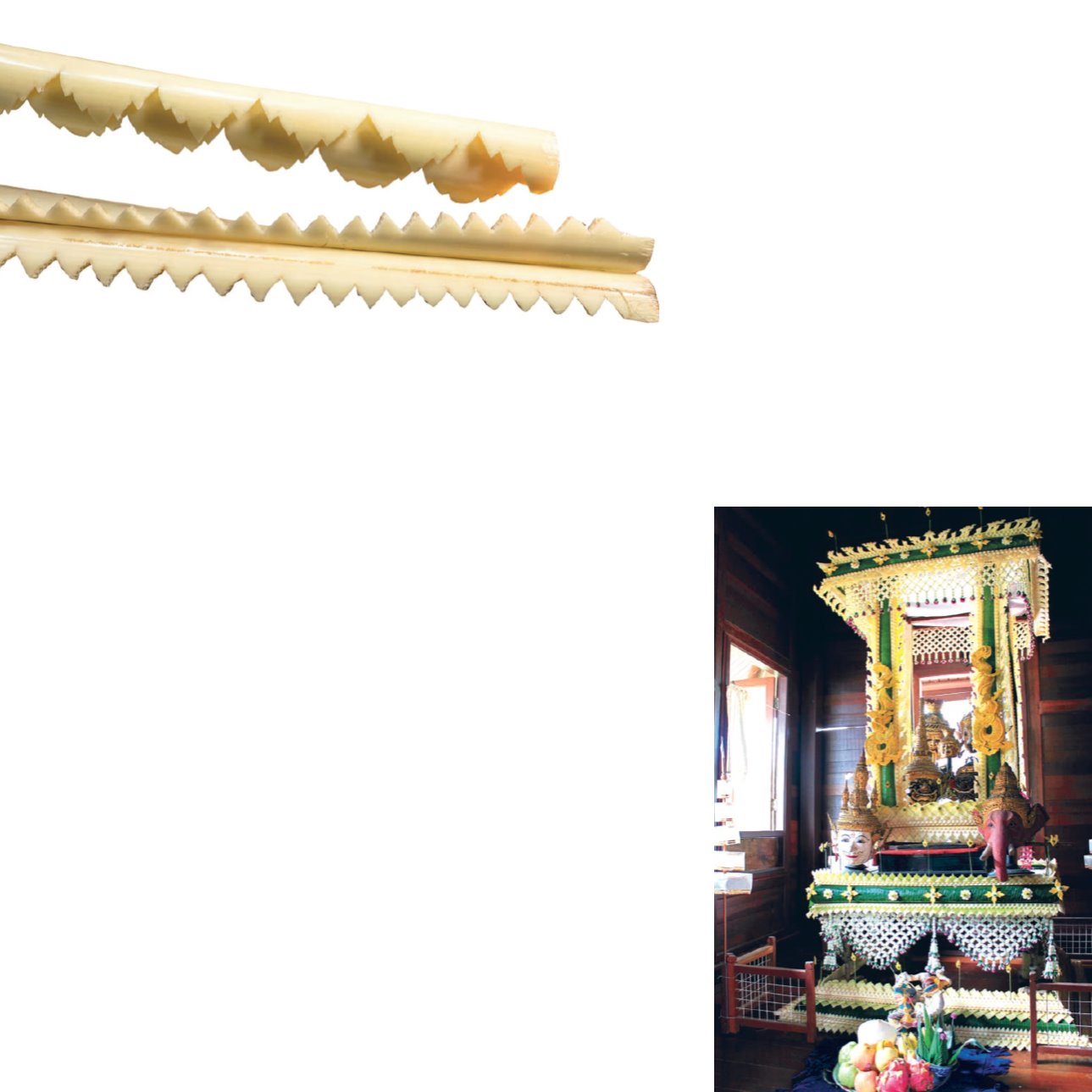

130
|
Culture Ways of Life and Wisdom
Both types of stalk carvings are classified as the most difficult. The craftsmen must combine
Thai patterns in place all over the banana stalk with special care, otherwise the patterns would be
easily broken. However, these two are the patterns that craftsmen most likely show off their full
skills. The patterns are based on local beliefs and traditions. Sometimes craftsmen perforate the
stalks and insert color paper inside to make color. Alternatively, they lightly mark the stalks with
knife before coloring on the marks and lightly wipe the colour to see the clear pattern.
The value of the banana stalk carving is considered as one of the cultural evidences since the
ancient times, especially involved in various rituals associated with the deaths of Buddhist people,
such as the cremation of the deceased. In the past, the cremation were often implemented in an
open area on a temporary crematory, made of wood or bamboo. The crematorium for burning
the body is normally placed by the banana tree before firewood and the coffin. Because banana’s
stems and its leaves are watery, they can be fire resistance to protect the catafalques. The use
of banana tree was evolved into stalk carving which changes its form to create beauty along with
functions. It is considered as wisdom in harmony with lifestyles and also demonstrates the ability
of Thai craftsmen who can adapt natural materials available in the locality to create the fine art.
• Patterns commonly used in banana stalk carving
include Lai Fan Pla, Lai Fan Sam, Lai Fan Ha, Lai
Fan Bua, Lai Khaeng Sing, etc.
“
The uniqueness of
the banana stalk carving
work is that there is no
motif draft on the stalks.
The craftsmen must
be expertise to create
patterns with good timing.
The patterns as a result
will be beautiful and
consistent.
”
“
Banana stalk carving has been inherited in
forms of craftsmanship in the Royal Court and
folk craftsmen in communities or provinces
such as the Wat Rakhangkhositaram family, the
Wat Apson Sawan family the Wat Dong Munlek
family and the Phetchaburi family.
”


















